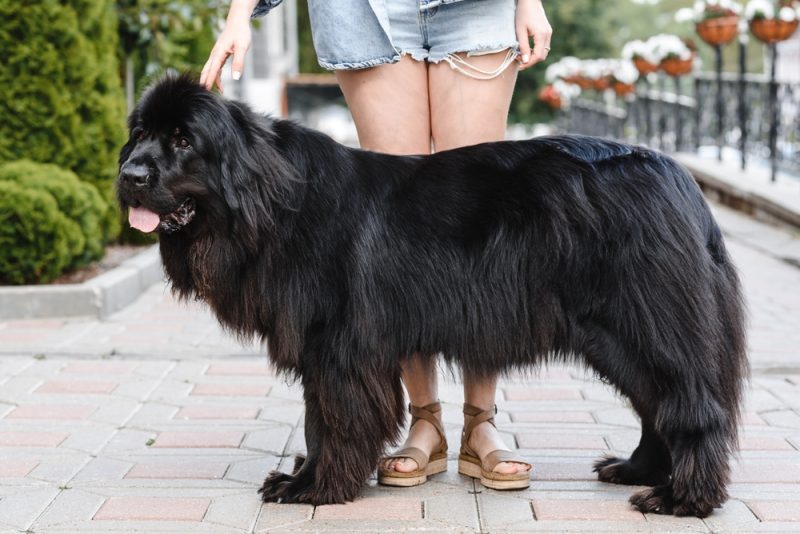If you have a dog, you’ve likely pondered their age in human years. You’ve probably also tried to determine your dog’s age in human years using the age-old “one year of a dog’s life equals seven years of a human’s life” equation. However, that 7-to-1 equation is more of an urban legend than a fact, so using that method won’t accurately get your pup’s age.
Why do people believe that one year of a dog’s life is equal to seven human years? Well, back in the day, a lot of dogs tended to live to be about 10 years old, and a lot of people lived to be about 70 years old. So, it was determined that 10 dog years was equal to 70 human years; thus, one year must equal seven years.
We know a lot more about figuring out a dog’s “human” age these days, though, and part of why the 7:1 equation doesn’t work is because various factors, like breed and size, affect this age. Dogs also age more quickly in the first few years of life than humans do. So, how can you figure it out?
Take a canine who is 10 years old; how old would they be in human years? Well, they could be anywhere from 56 to 79 years in human years! Here’s how it works.
| Size: | Age in Human Years: |
| Small breed (<20 lbs or less) | 56 years |
| Medium breed (21 to 50 lbs) | 60 years |
| Large breed (51 to 100 lbs) | 66 years |
| Giant breed (100+ lbs) | 79 years |
Source: AKC


How to Calculate Dog Years to Human Years
Calculating your dog’s age to human years involves a bit of math these days. According to the American Veterinary Medical Association, the first year of a dog’s life equals somewhere between 12 and 15 human years. The second year equals around 9 to 10 years, and from the third year on, each year of a dog’s life is equal to around 4 to 5 human years. However, these numbers have variations because they are dependent upon your dog’s size.


Small Breeds
Though no one is entirely sure why, smaller dog breeds live longer than larger ones. One possible reason for this is that bigger dogs have a faster growth rate, which can increase the chances of them developing cancer, leading to earlier deaths. Regardless, this makes the way to calculate a small dog’s age in human years slightly different than a larger pup. For small dogs, the first year of their life is equivalent to about 15 human years. After their second year of life, they’ll be approximately 24 human years, and after the third, about 28 human years. So, a 10-year-old small breed would be about 56 human years old (or nicely middle-aged!).
Medium Breeds
Calculating the age of a medium breed is quite similar to that of a small breed, as the first three years of a medium-sized dog’s life are also 15, 24, and 28 in human years. But by the time a medium-sized breed reaches the age of six in dog years, they begin to age just a smidge faster than smaller breeds. So by the time a medium breed reaches age ten, they’d be approximately 60 human years old.
Large Breeds
As mentioned, large-breed dogs age more quickly than small and medium-breeds. However, until the age of six, their age is the same in human years as smaller dogs. At age six, these breeds began to grow older fast, though, so by the time a large breed canine is ten years old, they’d be around 66 in human years.
Giant Breeds
Of course, giant breeds age the fastest of all. However, they begin life a bit younger in human years than other canines, as the first year of their life only equals about 12 people years. Their second year of life gets them to 22 human years, but age three is when they start aging more quickly, as by this time, they’re around 31 human years of age. So, by the time they reach the age of ten, a giant breed would be 79 in human years!


What’s the Science Behind Dog Years vs. Human Years?
The science behind canine aging and dog years versus human years still isn’t quite clear. Determining how dogs age isn’t a perfect science because it varies from dog to dog. However, canine gerontology is a growing field of science, and researchers are trying to better determine how our pups age to help promote longevity in canine lives.
A study done in 2019 came up with a newer and more accurate way of determining a dog’s age based on changes to canine and human DNA over time. The process involved studying DNA methylation patterns. As humans and dogs get older, methyl groups are added to their DNA which changes the DNA activity but not the DNA sequence itself. This study was only done on Labrador Retrievers, though, so it’s unclear how the formula the researchers developed might be applied to other canine breeds.1


The Life Stages of a Dog
Canines have four main life stages—puppy, young adult, mature adult, and senior (though the American Animal Hospital Association (AAHA) includes end-of-life as a fifth stage of a dog’s life). The age ranges for these different stages will again vary depending on your dog’s breed and size but the following gives a general idea of when they are likely to hit different life stages.


Puppy: 0–1 years
The puppy stage age range can vary by dog, as it sometimes takes certain breeds longer to fully mature, but generally, this stage encompasses from birth to the end of rapid growth which in a medium sized dog is around 9 months of age, but for larger dogs can continue until over a year. It is also the most crucial time of a canine’s life as they are learning about the world around them, getting vaccinations, and being trained and socialized.
Young Adult: 1 year –3 years
This stage is from the end of rapid growth to the completion of both physical and social maturity. Training and socialization continues to be very important.
Mature Adult: 3 years–8 years
Once a dog has reached their full size and social maturity they are officially a mature adult! It’s essential to keep your dog healthy during this stage of life with proper home and vet care to ensure they live their longest.
Senior: 8+ years
The senior years of a dog’s life are when you want to ensure you’re keeping a close eye on your pup’s health.


Life Span by Breed Size


| Size: | Average life span: |
| Small breed (<20 lbs or less): | 10–15 years |
| Medium breed (21 to 50 lbs): | 10–13 years |
| Large breed (51 to 100 lbs): | 10–12 years |
| Giant breed (100+ lbs): | 8–10 years |
Source: American Kennel Club
Key Factors That Affect a Dog’s Aging Process
Genetics, such as a dog’s size, is usually the most significant factor in how a dog ages, but some key factors in their life can also affect how they age.
The first is diet. Like humans, dogs who constantly consume unhealthy foods with too much fat or sugar can become overweight or develop health problems, which can make them age faster. The best approach is to stick with high-quality balanced dog food designed to meet your pup’s specific nutritional needs.
Environmental factors may also affect how quickly a dog ages. If a dog is in an environment that doesn’t meet their physical and mental needs, they could age faster. Likewise, if they’re surrounded by an environment that is unhealthy for them, it could affect the aging process.


Conclusion
Though many believe that one year of a dog’s life equals seven of a human’s life, this isn’t actually accurate. How canines age is still a bit of a mystery, but we do know that dogs of different sizes age differently, so how old a dog is in human years at the age of ten can vary somewhat. But if you have a small breed who is ten years old, they are approximately 56 in human years. A medium-sized breed would be about 60 in human years at this age, while a large breed would be 66. And giant breeds would be 79 in human years once they reach age ten.
Featured Image Credit: Kelly Magnuson, Shutterstock






